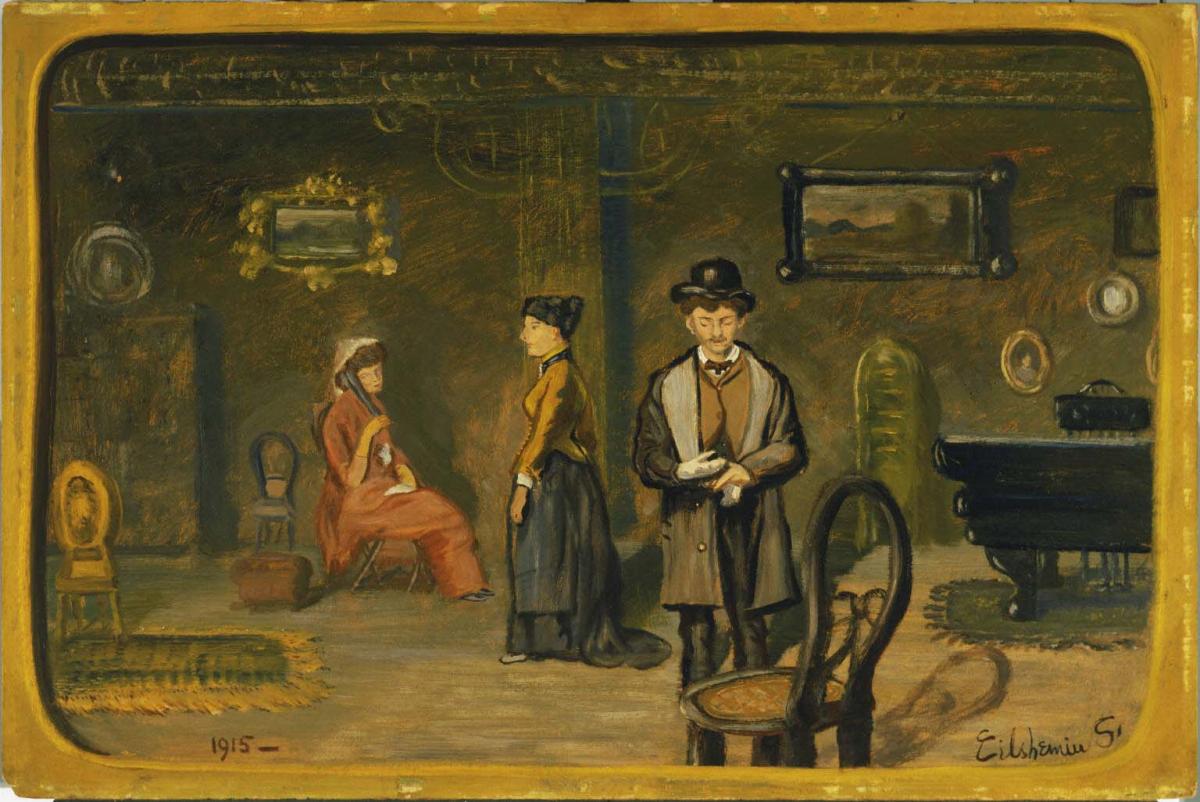The Rejected Suitor
Louis Michel Eilshemius ( 1915 )

The Rejected Suitor is one of several works Louis Michel Eilshemius painted around 1915 that resemble theatrical tableaus. Duncan Phillips said that it was like “an unchangeably perfect scene in a grim and dismal play by Ibsen.” Its theatrical quality is enhanced by the device of the “self-made frame,” Eilshemius’s painted border, which encloses the scene like a proscenium arch. Using a dark palette in which browns and deep reds predominate, Eilshemius painted figures and settings with a broad, almost caricature-like simplicity. He also stopped using canvas and began painting on scraps of cardboard and cigar-box lids.
It was late works such as The Rejected Suitor that garnered Eilshemius the label of primitive when he was plucked from obscurity by Duchamp. However, Eilshemius had received fairly extensive academic training, and he took issue with the primitive label, complaining that, “among the critics’ pronouncements I always see the words primitive and naive. Now I am neither. I am the true artist.” Phillips noticed an underlying sophistication of design in The Rejected Suitor, which features the repetition of ovals, the juxtaposition of horizontal and vertical elements, and “modulations of darks and lights – warmer and cooler areas within the melancholy tone and the dominant shapes.” He also concluded that in such works Eilshemius “reveals the fact that now and then he could achieve in that last period a unique and intense expressionism of design and tone—in which laughter and despair are fused with a smouldering passion.”
In addition to being a prolific painter, Eilshemius was the author of numerous poems, short stories, songs, novels, and plays. While The Rejected Suitor could have derived from a production he had seen or one of his own plays, it may have been based on personal experience. Phillips suggested that “it is perhaps a memory of a deep personal hurt, of a rankling humiliation in that musty room….” In his youth, Eilshemius had had several unhappy romantic encounters that became the subjects of love poems and fanciful reminiscences. Eilshemius never married, and appears to have had naive, awkward relationships with women that were reflected in the sexual tension, ambivalence, and bittersweet intimacy in his depictions of them.